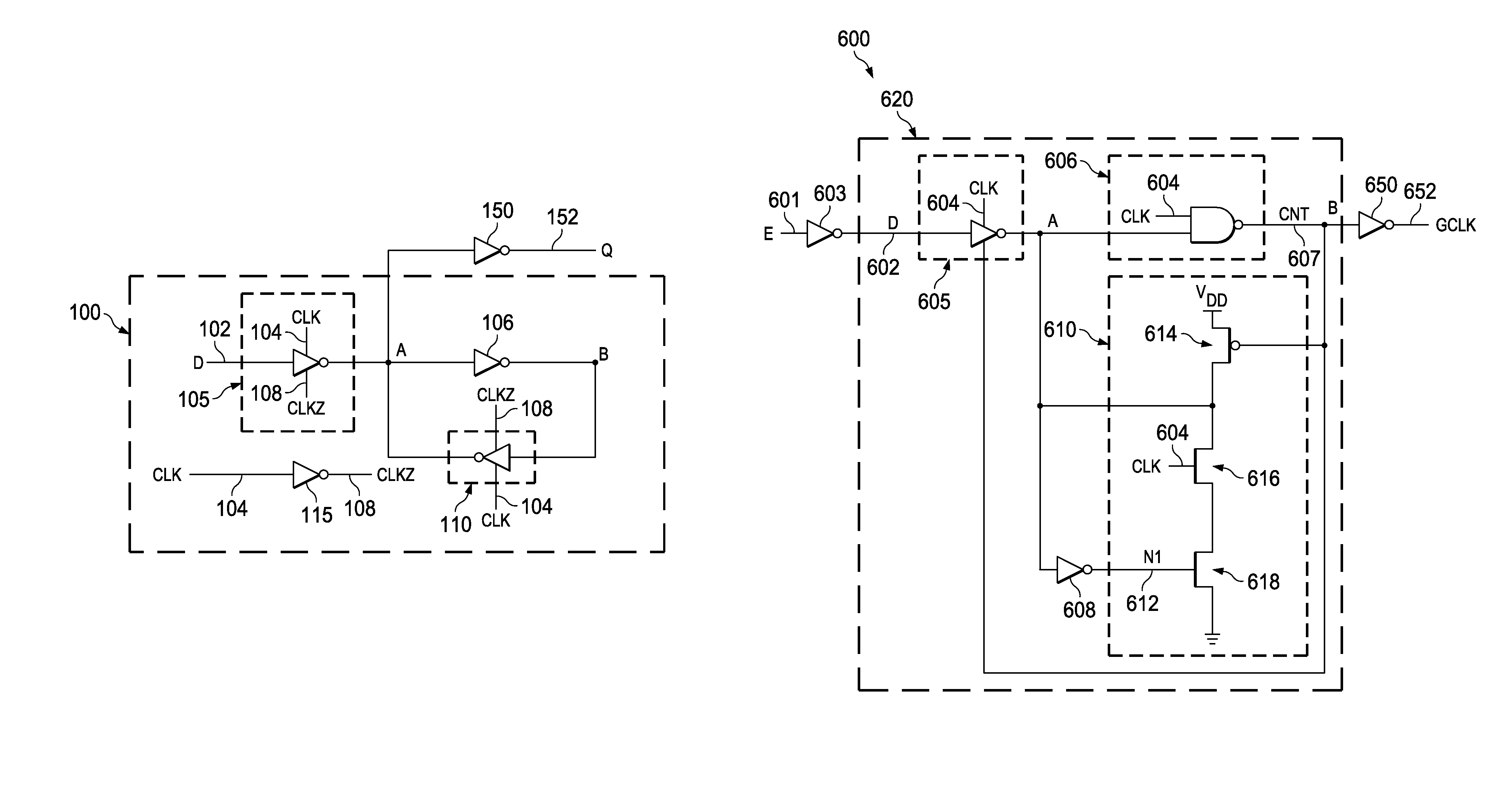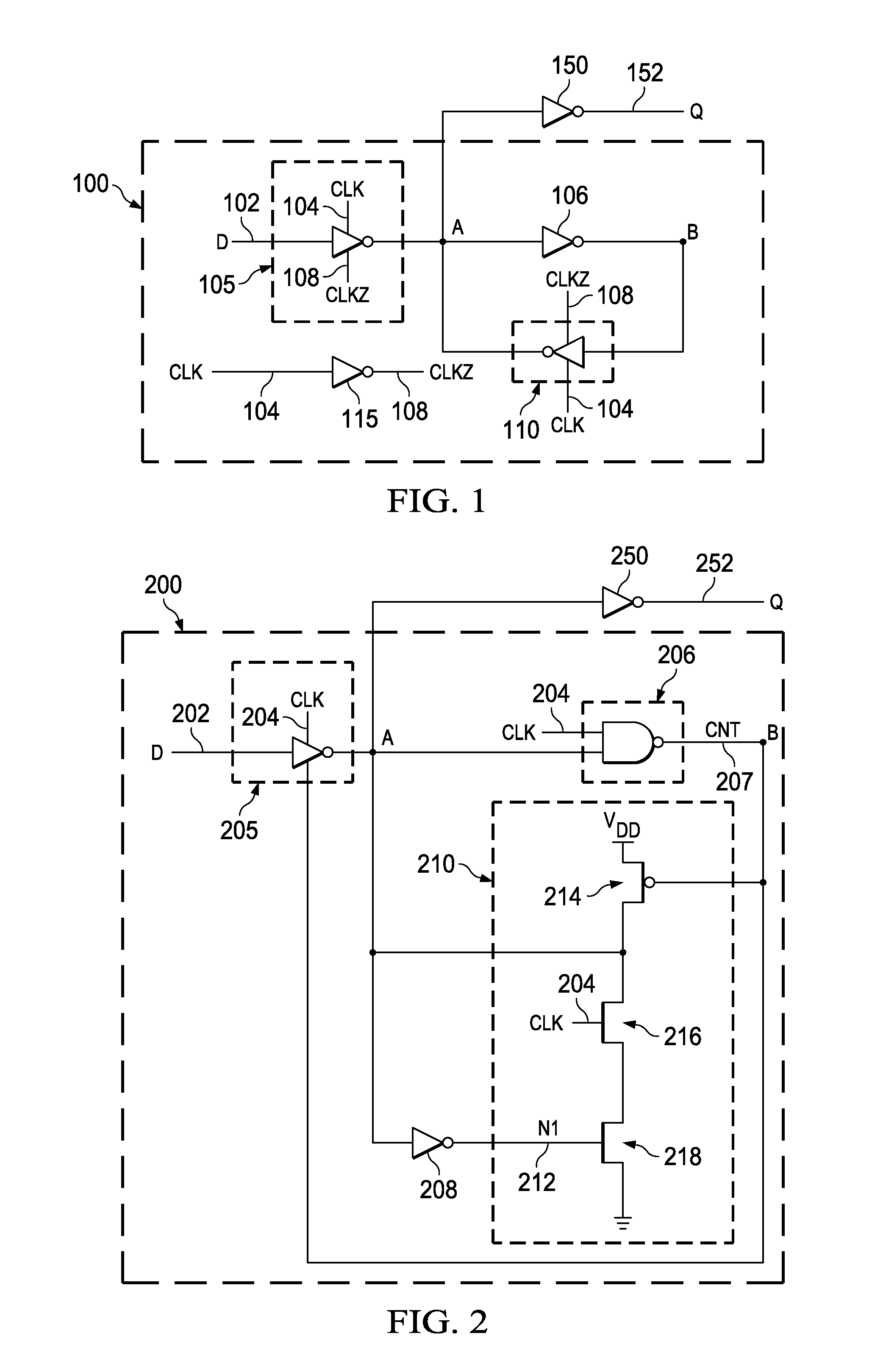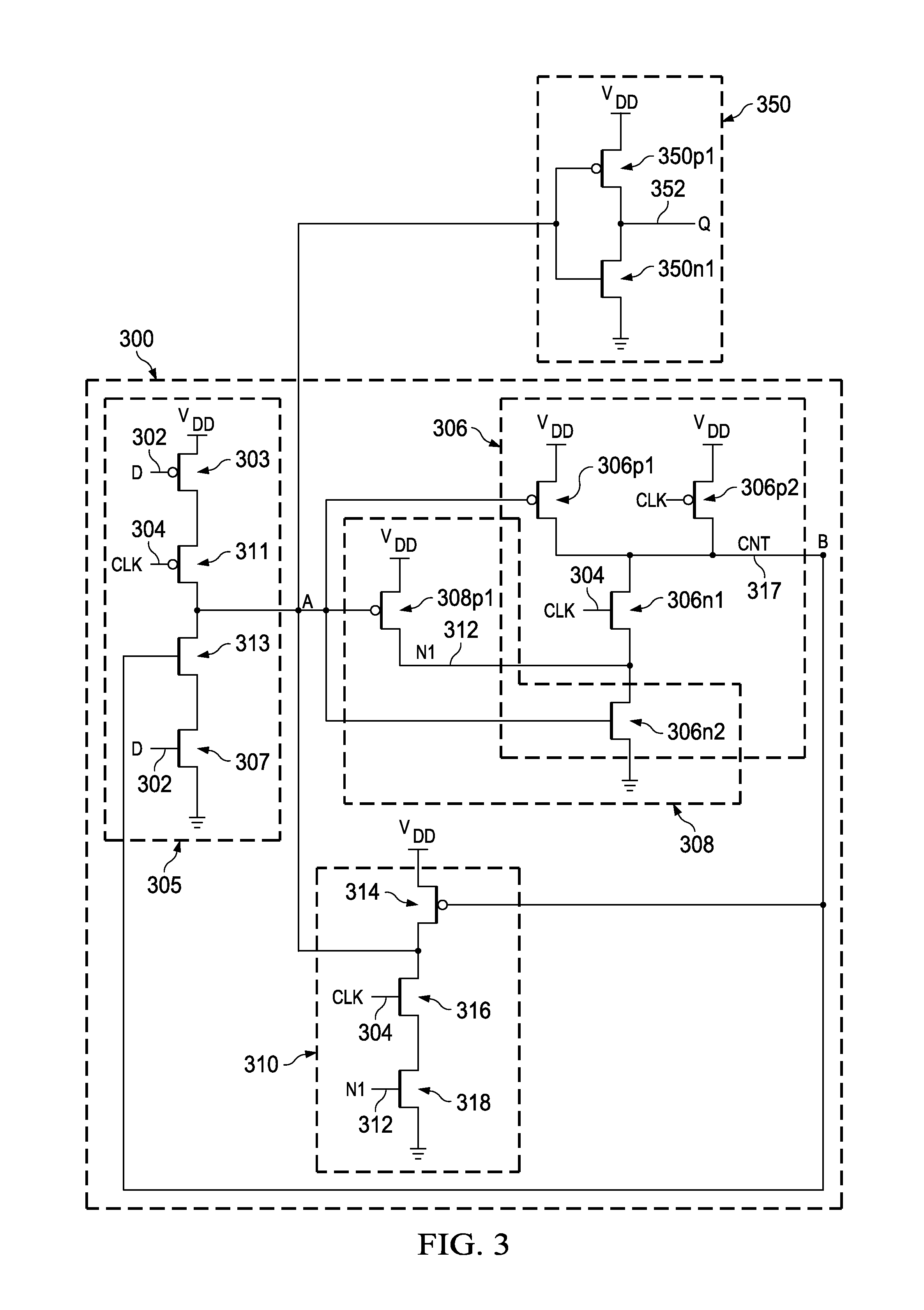Integrated clock gating cell using a low area and a low power latch
a low area and latch technology, applied in the direction of pulse manipulation, logic circuit coupling/interface arrangement, pulse technique, etc., can solve the problem of increasing power consumption
- Summary
- Abstract
- Description
- Claims
- Application Information
AI Technical Summary
Benefits of technology
Problems solved by technology
Method used
Image
Examples
Embodiment Construction
[0015]FIG. 1 illustrates a schematic of a latch 100. The latch 100 includes a first tri-state inverter 105 that receives a latch input D 102, a clock input CLK 104 and an inverted clock input CLKZ 108. A node ‘A’ is coupled to the first tri-state inverter 105. A first inverter 106 is coupled to the node ‘A’. The first inverter 106 receives an output of the first tri-state inverter 105. A node ‘B’ receives an output of the first inverter 106. A second tri-state inverter 110 is coupled to the node ‘B’ and receives the output of the first inverter 106. The second tri-state inverter 110 receives the clock input CLK 104 and the inverted clock input CLKZ 108.
[0016]The node ‘A’ receives an output of the second tri-state inverter 110. An output inverter 150 is coupled to the latch 100. The output inverter 150 is coupled to the node ‘A’ and receives the output of the first tri-state inverter 105. The output inverter 150 generates a latch output Q 152. A second inverter 115 receives the clock...
PUM
 Login to View More
Login to View More Abstract
Description
Claims
Application Information
 Login to View More
Login to View More - R&D
- Intellectual Property
- Life Sciences
- Materials
- Tech Scout
- Unparalleled Data Quality
- Higher Quality Content
- 60% Fewer Hallucinations
Browse by: Latest US Patents, China's latest patents, Technical Efficacy Thesaurus, Application Domain, Technology Topic, Popular Technical Reports.
© 2025 PatSnap. All rights reserved.Legal|Privacy policy|Modern Slavery Act Transparency Statement|Sitemap|About US| Contact US: help@patsnap.com



